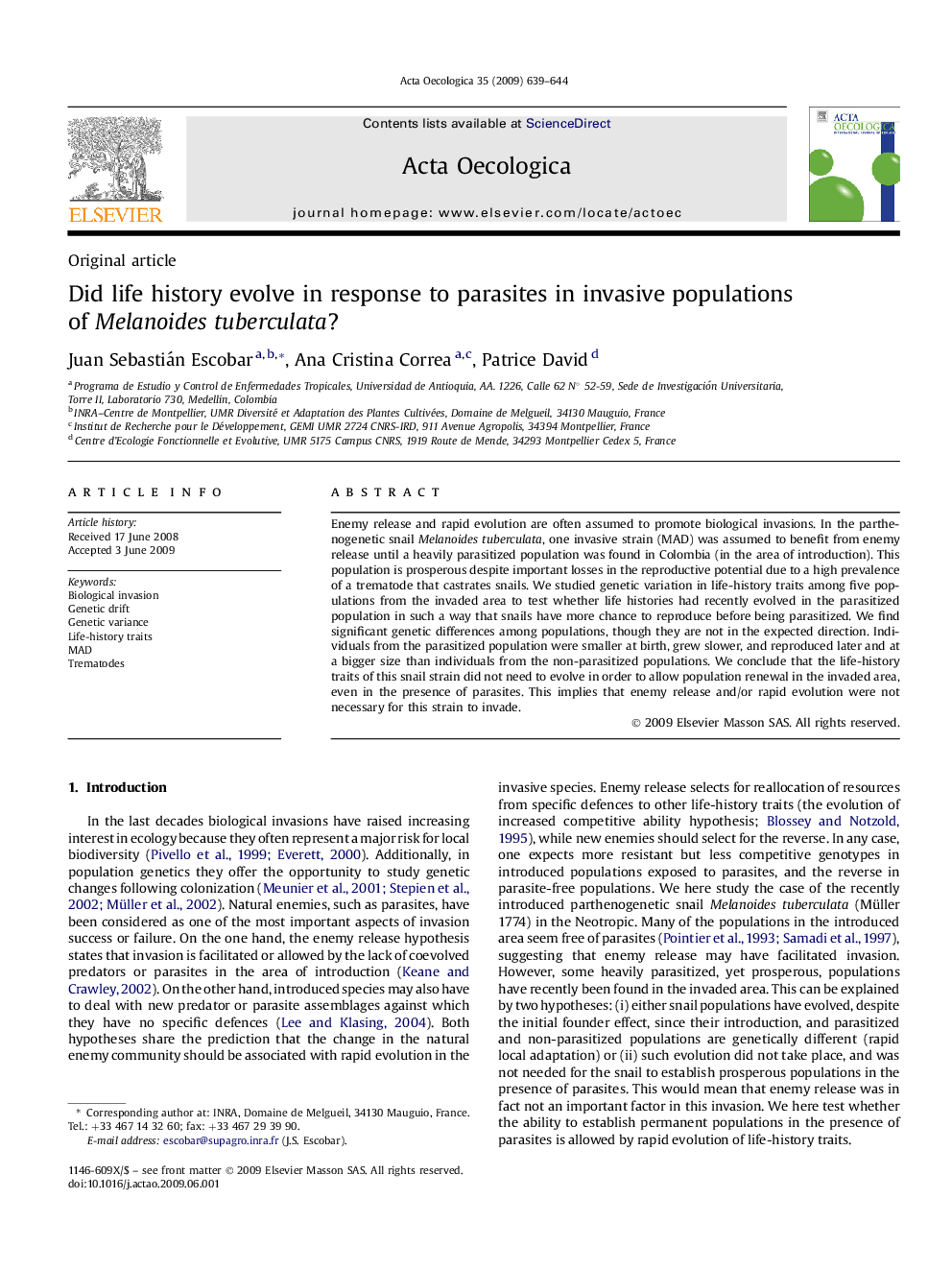| Article ID | Journal | Published Year | Pages | File Type |
|---|---|---|---|---|
| 4381428 | Acta Oecologica | 2009 | 6 Pages |
Abstract
Enemy release and rapid evolution are often assumed to promote biological invasions. In the parthenogenetic snail Melanoides tuberculata, one invasive strain (MAD) was assumed to benefit from enemy release until a heavily parasitized population was found in Colombia (in the area of introduction). This population is prosperous despite important losses in the reproductive potential due to a high prevalence of a trematode that castrates snails. We studied genetic variation in life-history traits among five populations from the invaded area to test whether life histories had recently evolved in the parasitized population in such a way that snails have more chance to reproduce before being parasitized. We find significant genetic differences among populations, though they are not in the expected direction. Individuals from the parasitized population were smaller at birth, grew slower, and reproduced later and at a bigger size than individuals from the non-parasitized populations. We conclude that the life-history traits of this snail strain did not need to evolve in order to allow population renewal in the invaded area, even in the presence of parasites. This implies that enemy release and/or rapid evolution were not necessary for this strain to invade.
Related Topics
Life Sciences
Agricultural and Biological Sciences
Ecology, Evolution, Behavior and Systematics
Authors
Juan Sebastián Escobar, Ana Cristina Correa, Patrice David,
